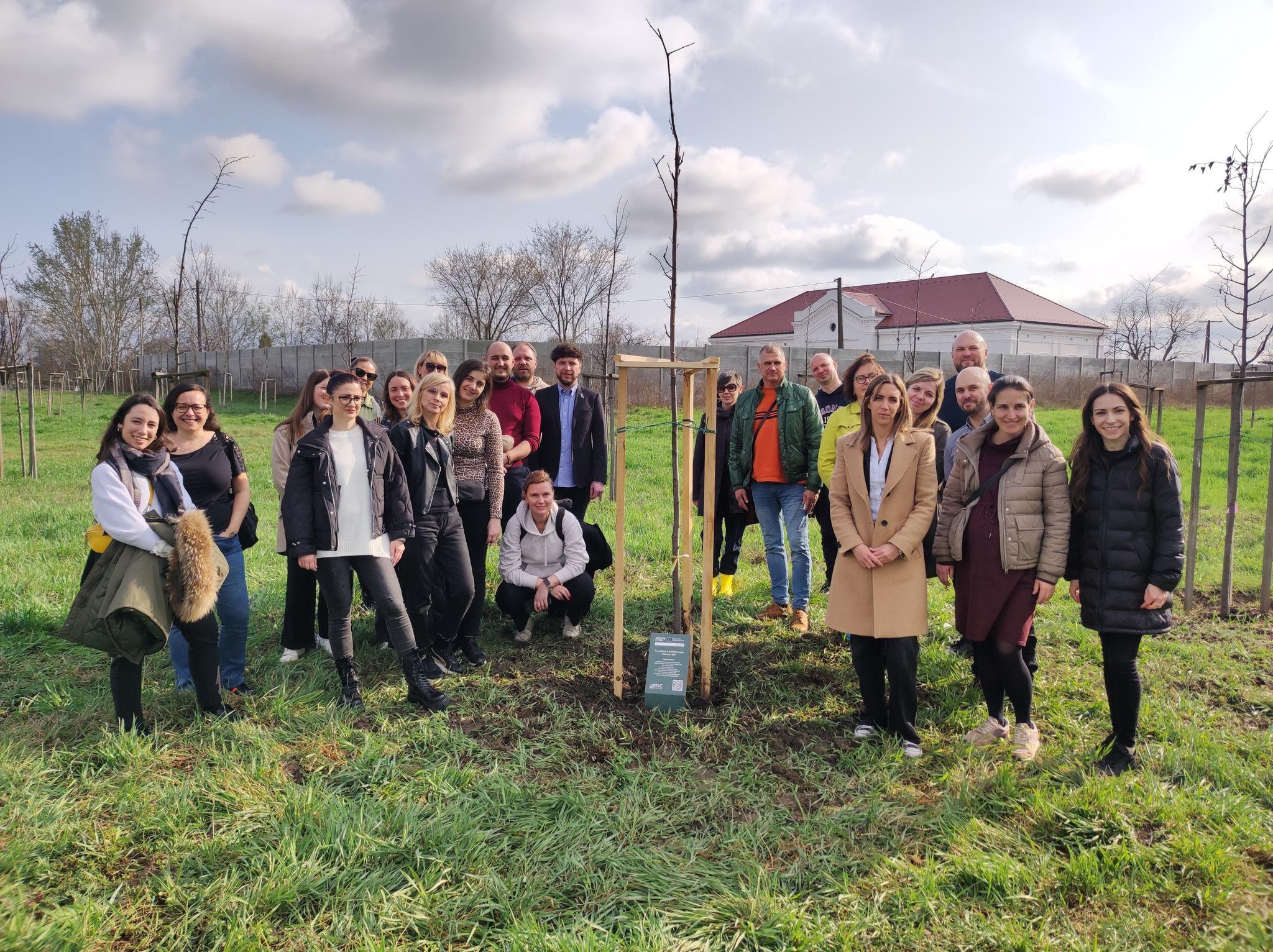HungAIRy’s Shelterbelt Forest Welcomes International Partners

On March 25, 2025, as part of the ACROSS project, foreign partners visited Debrecen to see the progress of the HungAIRy Debrecen pilot project, including the growth of the shelterbelts. They were also given the opportunity to contribute to improving the city's air quality by planting a few saplings.
What is the ACROSS Project?
The INTERREG EUROPE ACROSS project aims to promote sustainability, achieve climate neutrality, and develop regional policy tools in the field of Corporate Social Responsibility (CSR). In this project, nine partners from seven countries (Romania, Hungary, Latvia, Croatia, Italy, Belgium, Moldova) are working together to achieve these goals.
During their visit, guests had the chance to see the LIFE IP HungAIRy project’s good practice in Debrecen, specifically the shelterbelt near the Vértessy Manor. In addition to observing the trees, the guests learned about the necessity of planting shelterbelts, the rationale behind selecting the area and tree species, and got an overview of the HungAIRy project and the work of the eco-managers.
As part of the project's pilot action, 689 horticultural saplings (small-leaved linden, silver linden, and field elm) were planted near the Vértessy Manor in November 2022, with the goal of protecting the city from agricultural dust pollution coming from the west.
The primary objective of the shelterbelt planting, part of the LIFE IP HungAIRy program, is to improve air quality in Debrecen, and in certain areas, to reduce noise pollution as well. Other shelterbelts have been planted at different locations: 36 horticultural saplings near Vezér Street, and 20,000 forestry saplings around Vincellér Street and Derék Street.
The trees planted in these shelterbelts will begin to reach their maximum effect in 20-25 years, when they will have grown and developed large canopies. Once mature, the trees will not only purify the city’s air, but they will also have an impact on the development of its microclimate.
As a result of the project, these shelterbelts will be able to trap 95 tons of dust and 76 tons of carbon dioxide annually. They will also mitigate the impact of 16,000 vehicles on the environment and will produce enough oxygen daily to sustain 80,000 people.
The guests also had the opportunity to experience the maintenance of the shelterbelt near the Vértessy Manor up close. Some of the saplings did not survive the winter, and their replacement became timely. Those willing to participate had the chance to plant new trees.
Source: futureofdebrecen.hu